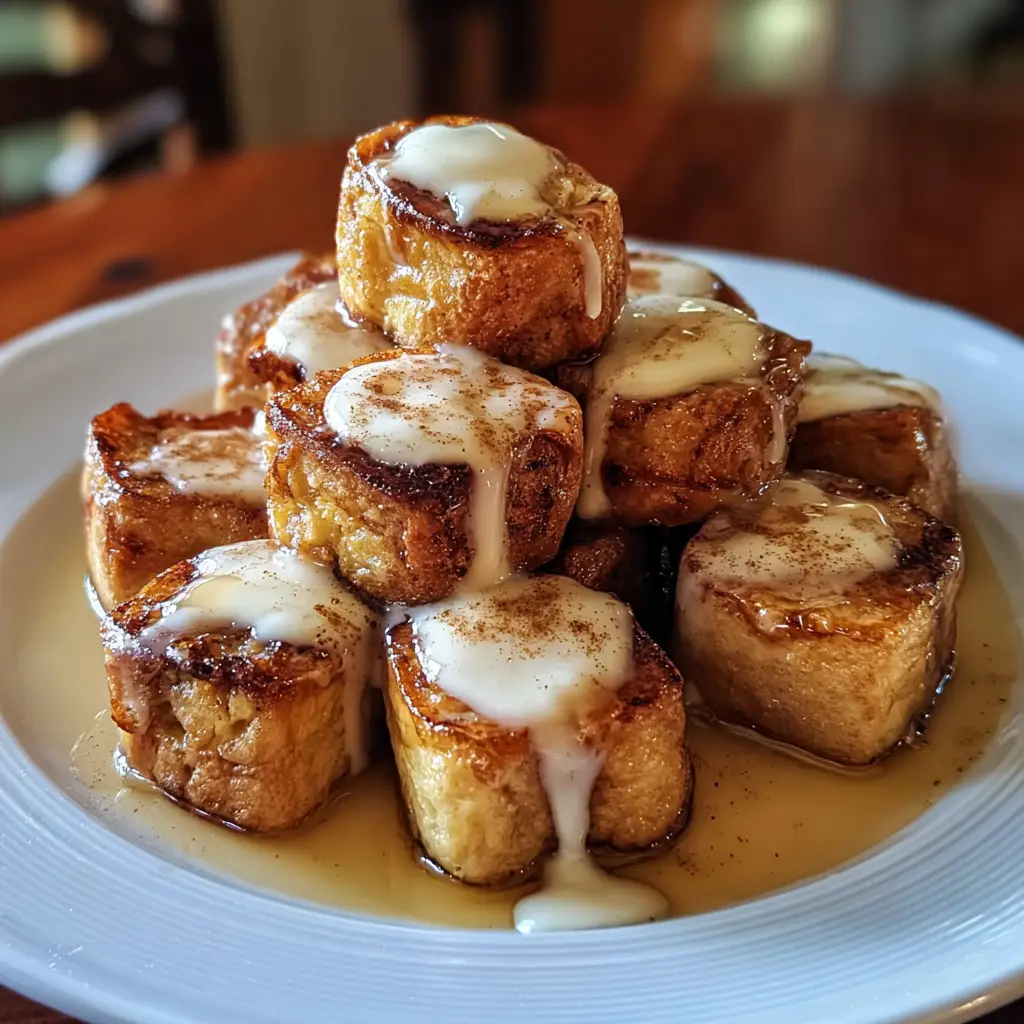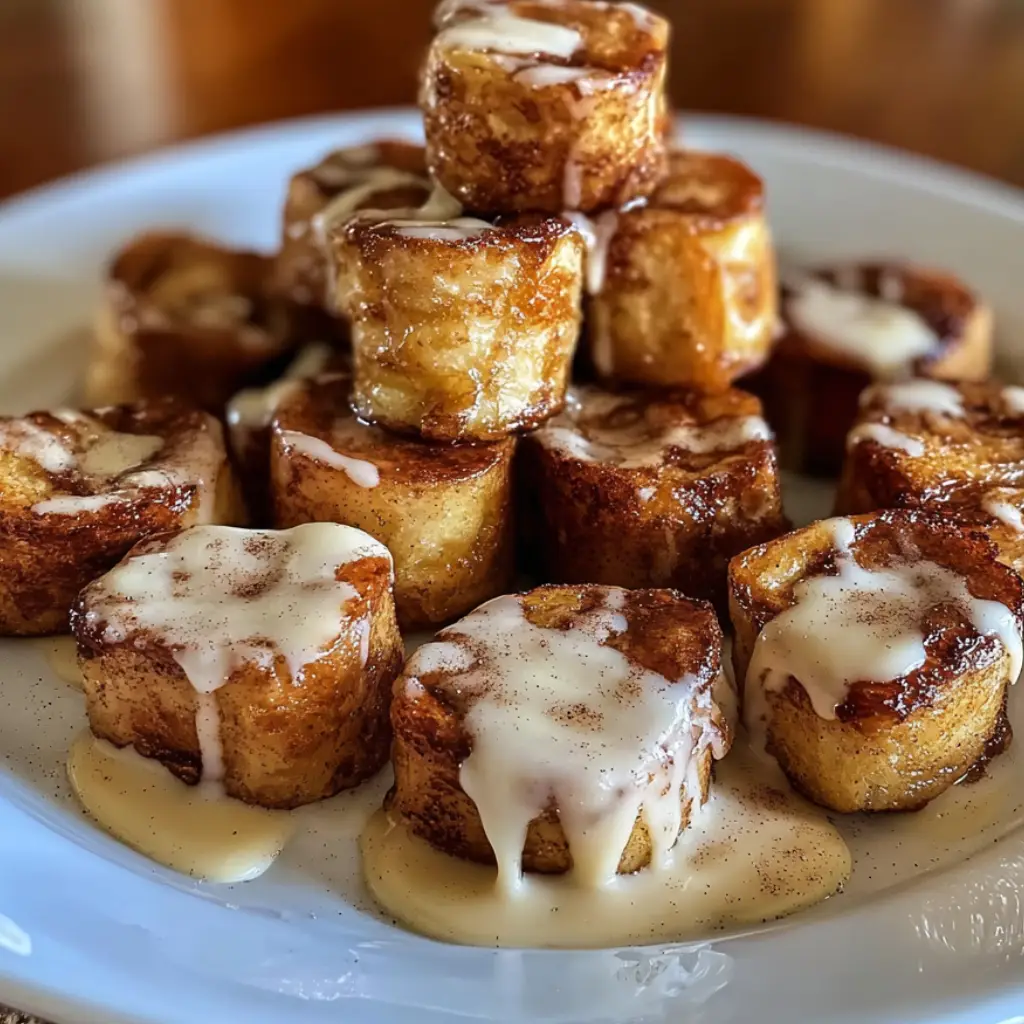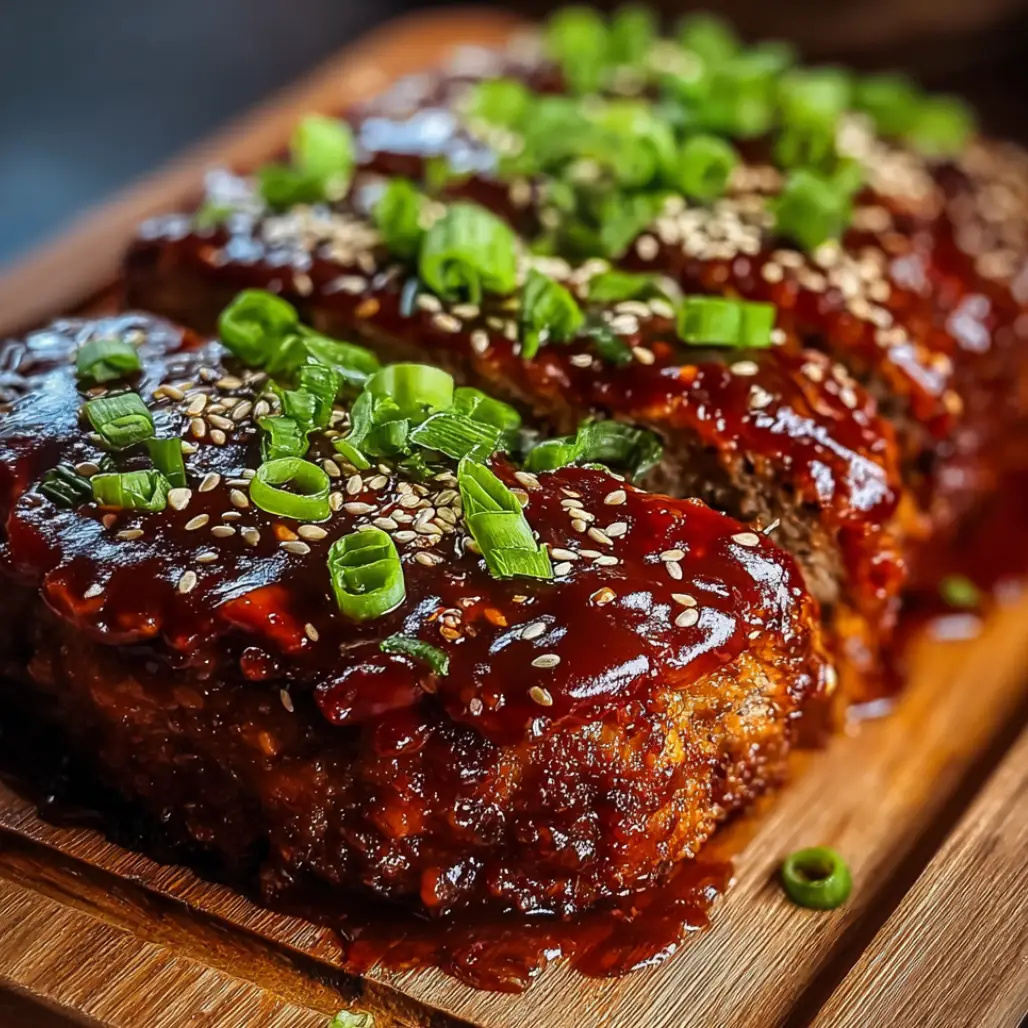| Prep Time: 10 minutes | Cook Time: 15 minutes | Total Time: 25 minutes | Serves: 6 |
|---|
When weekend mornings call for something extraordinary that combines the beloved comfort of cinnamon rolls with the classic elegance of French toast, cinnamon roll french toast bites deliver the perfect fusion of these breakfast favorites because they transform simple day-old bread into irresistible bite-sized treasures that capture the essence of freshly baked cinnamon rolls without the lengthy preparation time. These delightful morsels showcase the magic of transforming ordinary ingredients into extraordinary experiences, creating warm, pillowy cubes that taste like miniature cinnamon donuts because they’re coated in aromatic cinnamon sugar that caramelizes beautifully during cooking while maintaining the tender, custard-soaked interior that defines exceptional French toast.
Why This Cinnamon Roll French Toast Bites Recipe Works
The brilliance of these cinnamon roll french toast bites lies in their ingenious approach to combining two labor-intensive breakfast classics into one streamlined recipe that delivers maximum flavor impact with minimal effort because they eliminate the need for yeast rising times or complex pastry techniques while still providing the authentic taste experience that makes cinnamon rolls so universally beloved. The bite-sized format proves particularly advantageous because it creates more surface area for the cinnamon sugar coating to adhere while ensuring even cooking throughout each piece.
This recipe succeeds where traditional approaches often disappoint because it recognizes that day-old bread actually performs better than fresh bread in French toast applications, absorbing the custard mixture without becoming soggy or falling apart during the cooking process. The quick sautéing method creates the perfect balance between crispy exterior and custardy interior because high heat allows for rapid caramelization while the bread’s absorbed moisture creates steam that keeps the centers tender and flavorful.
Essential Ingredients for Perfect Results
8 slices day-old thick bread (brioche, challah, or Texas toast work beautifully)
4 large eggs (room temperature for smooth custard mixing)
1/2 cup whole milk (provides richness and proper custard consistency)
2 tablespoons heavy cream (adds luxurious texture to the custard base)
2 tablespoons granulated sugar (sweetens the custard without overpowering)
1 teaspoon vanilla extract (pure vanilla for authentic flavor depth)
1/2 teaspoon ground cinnamon (for the custard mixture warmth)
1/4 teaspoon salt (enhances all flavors and balances sweetness)
1/2 cup granulated sugar (for the coating mixture)
2 tablespoons ground cinnamon (creates the signature coating flavor)
4 tablespoons unsalted butter (for cooking and richness)
1/4 cup powdered sugar (for dusting the finished bites)
2 tablespoons maple syrup (optional, for serving alongside)
The Art of Creating Exceptional Cinnamon Roll French Toast Bites
Creating exceptional cinnamon roll french toast bites requires understanding the delicate balance between custard absorption and structural integrity because the bread must absorb enough liquid to create the characteristic custardy interior while maintaining enough structure to hold together during the vigorous tossing process that coats each piece with cinnamon sugar. The key lies in using properly aged bread that has lost some moisture while retaining its basic structure.
Success depends on mastering the timing between cooking and coating because the cinnamon sugar mixture adheres best when the bread cubes are still hot from the skillet, creating a caramelized coating that develops complex flavors through the residual heat. The stirring technique during cooking proves equally important, as gentle movements prevent breaking while ensuring even browning on all surfaces that creates the appealing golden color and textural contrast.
Step-by-Step Instructions for Perfect Results
Begin by cutting the day-old bread into 1-inch cubes, removing crusts if desired because uniform sizing ensures even cooking while eliminating crusts creates more tender bites that absorb the custard mixture more effectively. Arrange the cubes in a single layer on a large plate or baking sheet for easy handling during the dipping process.
Professional Tip: Allow fresh bread to sit uncovered overnight to achieve the proper texture because slightly stale bread absorbs custard better without becoming mushy during cooking.
Key Points: Consistent cube sizing and proper bread preparation create the foundation for evenly cooked cinnamon roll french toast bites with optimal texture throughout.
In a shallow bowl, whisk together eggs, milk, heavy cream, 2 tablespoons sugar, vanilla extract, 1/2 teaspoon cinnamon, and salt until completely smooth because thorough mixing creates a homogeneous custard that coats each bread cube evenly without streaks or lumps that could affect the final texture.
Professional Tip: Strain the custard mixture through a fine-mesh sieve if any lumps remain because smooth custard creates more professional results and better flavor distribution.
Key Points: Proper custard preparation ensures even flavor penetration and creates the creamy interior texture that distinguishes excellent French toast from ordinary breakfast bread.
In a separate bowl, combine the 1/2 cup sugar and 2 tablespoons cinnamon, whisking thoroughly to distribute the spice evenly because uniform mixing prevents concentrated pockets of cinnamon that could create bitter or overpowering flavors in individual bites.
Professional Tip: Make extra cinnamon sugar mixture because some will inevitably stick to the bowl and utensils, and having extra ensures adequate coating for all the bread cubes.
Key Points: Even spice distribution creates consistent flavor throughout the coating while adequate quantity ensures complete coverage of all cinnamon roll french toast bites.
Heat 2 tablespoons of butter in a large skillet over medium heat until melted and beginning to foam because the right temperature creates immediate sizzling when the bread cubes are added while preventing burning that could create bitter flavors or uneven browning.
Professional Tip: Test the temperature by dropping a small piece of bread into the skillet because it should sizzle immediately but not aggressively, indicating the perfect cooking temperature.
Key Points: Proper butter temperature ensures optimal searing and flavor development while preventing the common problems of burning or insufficient browning.
Working in batches to avoid overcrowding, dip bread cubes quickly in the custard mixture, allowing excess to drip off before placing them in the hot skillet because oversaturated cubes can become soggy while undersaturated ones lack the characteristic French toast flavor and texture.
Professional Tip: Use a slotted spoon or tongs to handle the custard-soaked cubes because this prevents them from breaking apart while ensuring proper drainage of excess liquid.
Key Points: Optimal custard absorption creates the perfect balance between flavor penetration and structural integrity necessary for successful cinnamon roll french toast bites.
Cook the bread cubes for 2-3 minutes per side, turning gently with a spatula to achieve golden-brown color on all surfaces because even browning creates appealing visual presentation while developing the complex flavors that distinguish exceptional French toast from mediocre attempts.
Professional Tip: Avoid moving the cubes too frequently because allowing them to develop proper color on each side creates better flavor and texture than constant stirring.
Key Points: Patient cooking technique allows proper caramelization while ensuring even heating throughout each cube for optimal texture and flavor development.
Immediately transfer the hot cinnamon roll french toast bites to the bowl containing the cinnamon sugar mixture, tossing quickly but thoroughly to coat all surfaces because the residual heat helps the sugar mixture adhere while beginning the caramelization process that creates the signature coating.
Professional Tip: Work quickly during the coating process because the sugar adheres best to hot surfaces and begins developing flavor immediately upon contact.
Key Points: Immediate coating while hot ensures maximum adherence and flavor development while creating the caramelized exterior that defines exceptional cinnamon roll french toast bites.
Repeat the cooking and coating process with remaining bread cubes, adding more butter to the skillet as needed because maintaining proper fat content prevents sticking while ensuring consistent browning across all batches for uniform appearance and flavor.
Professional Tip: Keep finished batches warm in a low oven if serving all at once because this maintains optimal temperature and texture while completing the remaining batches.
Key Points: Consistent technique across all batches ensures uniform quality while proper temperature maintenance creates the best possible serving experience.
Transfer the coated cinnamon roll french toast bites to a serving platter and dust lightly with powdered sugar if desired because this adds visual appeal and provides an additional layer of sweetness that complements the cinnamon coating without overwhelming the fundamental flavors.
Professional Tip: Serve immediately while still warm because the contrast between the crispy coating and tender interior is most pronounced when the bites are fresh from the skillet.
Key Points: Proper presentation and immediate service ensure optimal taste and texture while creating the memorable breakfast experience that makes this recipe so special.
Professional Tips for Culinary Excellence
Bread selection significantly impacts the final result because dense, sturdy varieties like brioche or challah maintain structure better than soft sandwich breads while providing richer flavor that complements the cinnamon and custard elements. Day-old bread works better than fresh because slightly dried bread absorbs custard without becoming soggy or falling apart during cooking.
Temperature control proves crucial throughout the cooking process because too-high heat burns the exterior before the interior warms through, while too-low heat prevents proper caramelization and creates greasy results. Medium heat allows for gradual cooking that develops flavors while maintaining the desired textural contrast between exterior and interior.
Batch size management ensures consistent results because overcrowding the skillet reduces temperature and creates steaming rather than searing, preventing the golden-brown color and crispy texture that characterize exceptional cinnamon roll french toast bites. Cook in smaller batches for better control and superior results.
Creative Variations to Explore
Transform your cinnamon roll french toast bites into apple pie-inspired treats by adding diced apples sautéed with butter and brown sugar to the skillet during the final minute of cooking because the fruit provides natural sweetness and textural interest while creating seasonal appeal that works particularly well during autumn months.
For chocolate lovers, create double chocolate versions by adding cocoa powder to the cinnamon sugar mixture and folding in mini chocolate chips just before serving because the chocolate elements complement the cinnamon while creating indulgent treats that satisfy more intense sweet cravings.
Develop citrus variations by adding orange or lemon zest to both the custard mixture and the cinnamon sugar coating because citrus brightens the rich flavors while creating sophisticated taste profiles that work beautifully for special occasion brunches or holiday entertaining.
Perfect Pairing Ideas for Complete Breakfast Experiences
Serve your cinnamon roll french toast bites alongside breakfast favorites that complement the sweet, cinnamon-spiced flavors while providing protein and nutritional balance that creates satisfying meal experiences for busy morning schedules.
Create elegant brunch presentations by arranging the bites on platters with fresh berries, whipped cream, and maple syrup for dipping because these accompaniments enhance the sweetness while providing textural variety that appeals to different taste preferences within the same meal.
Pair with refreshing beverages that cleanse the palate between bites while complementing the rich, sweet flavors without competing for attention or overwhelming the delicate cinnamon roll taste profile.
Discover More Culinary Adventures
Enhance your brunch repertoire with creative snacks and appetizers that bridge the gap between sweet and savory courses while providing interactive dining experiences that engage guests and family members in customizing their plates.
Expand your breakfast presentation skills with complementary perfect sides that balance sweet treats with nutritious options while creating visually appealing spread that demonstrates thoughtful menu planning and culinary creativity.
Explore additional sweet treat options with dessert recipes that utilize similar techniques but different flavor profiles, building confidence with custard-based preparations while expanding your repertoire of impressive yet achievable recipes.
Storage Guidelines for Optimal Quality
Store leftover cinnamon roll french toast bites in airtight containers in the refrigerator for up to three days because proper storage maintains food safety while preserving much of the original texture and flavor when properly reheated before serving.
For reheating, use a 350°F oven for 5-7 minutes rather than the microwave because dry heat helps restore the crispy exterior while warming the interior evenly without creating the soggy texture that microwaving often produces in bread-based dishes.
These bites can be prepared through the custard-soaking stage and refrigerated overnight before cooking because make-ahead preparation saves morning time while actually improving flavor development as the bread absorbs the custard mixture more thoroughly during extended contact time.
The Science Behind Perfect French Toast Texture
Custard absorption occurs through osmosis as the bread’s starches break down and create space for liquid penetration because understanding this process helps explain why day-old bread performs better than fresh bread in creating the ideal texture balance between crispy exterior and creamy interior.
Maillard browning reactions develop when proteins and sugars react under heat, creating the complex flavors and appealing golden color that characterize exceptional French toast because these chemical changes require proper temperature and timing to achieve optimal results without burning.
Caramelization of the cinnamon sugar coating begins immediately upon contact with hot surfaces because sugar molecules break down and recombine to form new compounds that create the distinctive flavors and appealing appearance that make these bites so irresistible to breakfast enthusiasts.
Troubleshooting Common Issues
If cinnamon roll french toast bites turn out soggy, excessive custard absorption or insufficient cooking heat likely caused the problem because wet interiors indicate inadequate moisture evaporation during the cooking process. Use slightly stale bread and ensure proper skillet temperature for better results.
Uneven browning typically results from overcrowded pans or inconsistent heat distribution because proper air circulation and even heating require adequate space between pieces while consistent temperature management prevents hot spots that create irregular coloring.
Coating that won’t adhere properly usually indicates insufficient heat in the bread cubes when tossing with cinnamon sugar because the coating mixture needs residual heat to stick effectively and begin the caramelization process that creates the signature exterior texture.
Additional Inspirations for Creative Cooking
Create themed breakfast menus featuring these bites alongside savory sides that provide protein and nutritional balance while demonstrating how sweet and savory elements work together to create satisfying meal experiences.
Build confidence with egg-based preparations by exploring flavored dips and marinades that showcase similar techniques while expanding your understanding of how different ingredients interact to create complex flavors.
Develop seasonal menu planning skills by incorporating these versatile bites into different occasions throughout the year, demonstrating how fundamental techniques adapt to create variety while maintaining the essential character that makes recipes memorable and repeatable.
Conclusion
These cinnamon roll french toast bites represent the perfect marriage of convenience and indulgence because they deliver the beloved flavors of traditional cinnamon rolls and classic French toast without the time investment or technical complexity that often intimidates home cooks seeking impressive breakfast presentations. The bite-sized format makes them particularly appealing for entertaining because guests can easily manage individual portions while experiencing the full flavor impact that makes this recipe so memorable.
The versatility of this foundational technique opens countless possibilities for customization and seasonal adaptation because the basic method accommodates different spices, add-ins, and presentation styles without compromising the essential character that makes these cinnamon roll french toast bites so universally appealing. Whether served for special occasion brunches, weekend family breakfasts, or casual entertaining, these delightful morsels provide the foundation for countless memorable mornings that celebrate the simple pleasure of exceptional homemade food that brings people together around the breakfast table.









